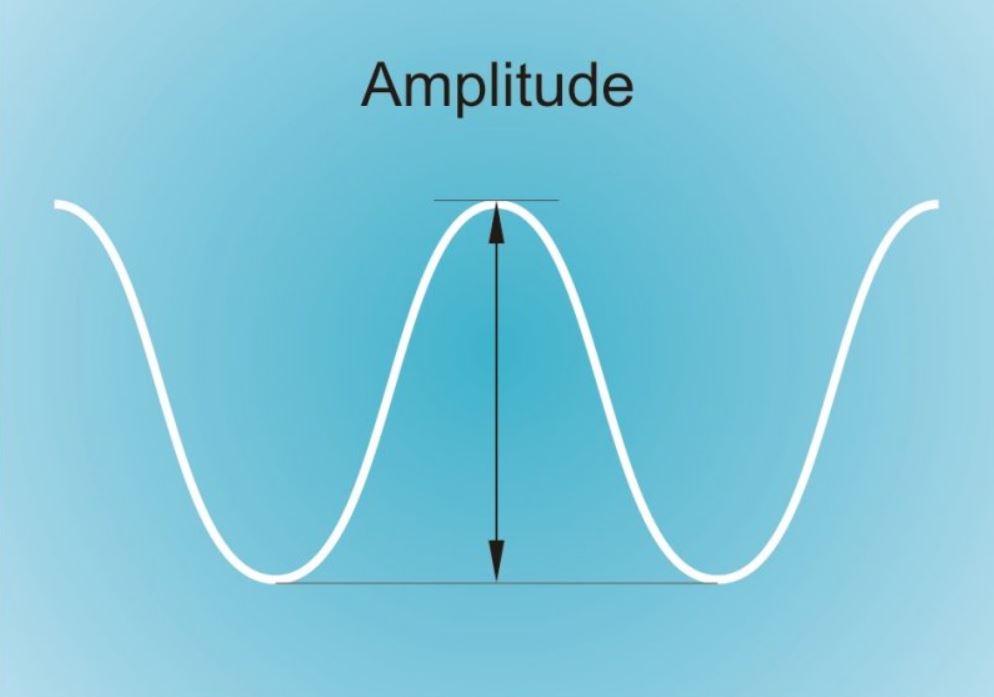In the ever-evolving world of cell phone technology, amplitude plays a crucial role that often goes unnoticed. How can amplitude play a role in cellphones? This question unveils a fascinating aspect of wireless communication that shapes our daily interactions. From the strength of signals to the quality of our calls, amplitude has an influence on various facets of mobile phone functionality, impacting everything from battery life to network coverage.
To grasp the significance of amplitude in cellphones, one must dive into the intricacies of signal propagation and modulation techniques. This exploration reveals how amplitude modulation, alongside other methods like OFDM, enables the transmission of digital signals across different frequency bands.
What’s more, understanding amplitude sheds light on common issues such as signal attenuation and multipath effects, providing insights into why cell phone reception can vary in different environments. As we delve deeper, we’ll uncover how amplitude intertwines with factors like transmitter power, antenna length, and FCC regulations to shape the mobile communication landscape we rely on every day.
Understanding Amplitude in Cellular Communication
Definition of Amplitude
Amplitude, in the context of cellular communication, refers to the magnitude of change in a wave’s signal strength. It plays a crucial role in transmitting messages via radio waves, which form the backbone of mobile networks. Amplitude modulation (AM), a technique used in electronic communication, varies the signal strength in proportion to the message signal [1].
Relationship Between Amplitude and Signal Strength
The relationship between amplitude and signal strength is direct and significant. In cellular networks, amplitude is closely tied to transmitter power and receive signal strength (RSSI). Transmitter power relates to the amplitude at the transmitting antenna, while RSSI often measures the electric field strength at the receiving antenna [2].
Interestingly, electrical engineers prefer using logarithmic units, so RSSI is frequently expressed in dBm (decibels relative to 1 milliwatt) [2]. This measurement helps to quantify the strength of the signal received by a cell phone, which has an influence on call quality and data transmission rates.
Impact on Cell Phone Performance
Amplitude has a substantial impact on cell phone performance. Higher amplitude generally translates to stronger signals, which can lead to improved reception and call quality. However, it’s worth noting that amplitude isn’t the sole factor affecting performance. Other elements, such as frequency and modulation techniques, also play crucial roles.
For instance, while amplitude modulation is used in some communication systems, modern cell phones often employ more advanced techniques like Orthogonal Frequency Division Multiplexing (OFDM). OFDM helps address issues like multipath interference, which can occur in urban environments where signals bounce off buildings and other structures [2].
Amplitude Modulation in Mobile Networks

Basics of Amplitude Modulation
Amplitude modulation (AM) is one of the earliest modulation methods used for transmitting information over radio waves. It involves varying the amplitude of a carrier wave in proportion to the modulating signal [1]. In AM, the voltage or power level of the information signal changes the amplitude of the carrier [1].
The standard equation for an AM signal is:
S(t) = Vc[1+Ka.m(t)]COSWc.t [3]
Where Vc is the carrier amplitude, Ka is the modulation index, m(t) is the modulating signal, and Wc is the carrier frequency.
Advantages and Limitations in Cellular Systems
While AM has some advantages, it’s not commonly used in modern cellular networks. Here’s a comparison of its pros and cons:
| Advantages | Limitations |
|---|---|
| Simple transmitter and receiver design | Susceptible to amplitude-dependent noise |
| Relatively inexpensive to implement | Lower bandwidth efficiency compared to FM or digital modulation |
| Good performance in the presence of noise | Poorer audio quality than FM |
| Compatible with earlier radio technologies | Not efficient in terms of power usage |
Comparison with Other Modulation Techniques
In the context of mobile networks, AM has been largely superseded by more advanced digital modulation techniques. Cell phones are digital devices, making AM an unsuitable option [4]. Digital encoding of speech, combined with robust digital transmission systems, offers superior quality and efficiency compared to AM [4].
Practical Applications of Amplitude in Cellphones
Power Management and Battery Life
Amplitude plays a crucial role in power management and battery life optimization in cellphones. Voltage regulators, which manipulate amplitude, are essential components that serve multiple purposes beyond their basic task of extending battery life [5]. These regulators step down or step up voltage between the battery and various sub-circuits, isolate different subsystems from each other, and protect sensitive circuitry from transient voltage changes [5].
In GSM phones, for instance, the power amplifier (PA) operates in a pulsed mode, causing voltage transients of up to 0.5V. Voltage regulators with good Power Supply Rejection Ratio (PSRR) significantly reduce these transients, ensuring stable operation of phone circuits [5].
Signal Quality and Coverage
Amplitude has a significant impact on signal quality and coverage in cellular networks. While it’s true that stronger signals (with greater field strength or amplitude) penetrate walls better, it’s the attenuation that matters most in a restricted power environment [2].
Signal quality, which refers to the strength, clarity, and reliability of electronic signals, is vital for seamless voice calls, crisp video conferencing, and uninterrupted internet browsing [6]. Factors affecting signal quality include:
- External interference
- Distance between transmitter and receiver
- Environmental conditions
- Equipment quality
Interestingly, the average Android app loses about 80% of its daily active users within the first three days, and about 90% by the first month [7]. While this statistic isn’t directly related to amplitude, it underscores the importance of maintaining good signal quality and user experience to retain users.
Future Trends in Amplitude Utilization
As cellular technology evolves, so does the utilization of amplitude in mobile networks. One promising trend is in power amplifier (PA) design. Future PAs could operate in a switching mode, carrying only phase information, while amplitude information would be added as supply modulation. This approach, similar to class S audio amplifiers, could potentially double the efficiency of the PA system [5].
Another trend is the increasing importance of efficient power management in future phone generations. As process shrinkage continues to push down supply voltages, the focus may shift from dropout voltage to other aspects of power management [5].
Lastly, the rise of 5G technology brings new challenges and opportunities for amplitude utilization. While 5G itself doesn’t inherently have problems penetrating walls, the use of mmWave transmission in some 5G implementations may face penetration issues depending on the walls and base station details [2]. This highlights the ongoing importance of amplitude considerations in evolving cellular technologies.
Conclusion
So to answer the question: How Can Amplitude Play a Role in CellPhones?
Amplitude plays a key role in shaping the cellphone experience we rely on daily. From its influence on signal strength and quality to its impact on power management and battery life, amplitude has a hand in many aspects of mobile communication. The interplay between amplitude and other factors like modulation techniques and environmental conditions highlights the complex nature of cellular networks and the ongoing efforts to improve their performance.
Looking ahead, the cellular industry continues to evolve, with new trends in power amplifier design and the rollout of 5G technology bringing fresh challenges and opportunities. These developments underscore the enduring importance of amplitude in mobile networks. As cellphone technology advances, understanding and optimizing amplitude utilization will remain crucial to enhance user experience and push the boundaries of what’s possible in wireless communication.
FAQs
1. What role does amplitude play in technology? / How Can Amplitude Play a Role in CellPhones?
Amplitude is vital for enhancing signal strength and quality. In telecommunications, higher amplitude signals carry more power, allowing them to cover longer distances. In the realm of audio engineering, amplitude affects how loud sounds are perceived.
2. How is amplitude utilized in mobile applications?
Amplitude is extensively used in mobile app analytics to track and analyze user actions within apps. It helps in understanding user behavior, creating cohorts for behavior tracking, and enhancing user experience based on their interactions within the app.
3. What advantages does using amplitude offer?
Using Amplitude provides several benefits, including the ability to segment users by demographics, geographic location, or behavior. This segmentation facilitates targeted marketing efforts, personalization of user experiences, and provides deeper insights into various user segments.
4. What is the purpose of the amplitude tool?
The Amplitude tool is a comprehensive product analytics platform designed to help developers and companies track user behavior. It is used to gather data on user engagement, retention, and revenue, thereby aiding in the development of improved products.




